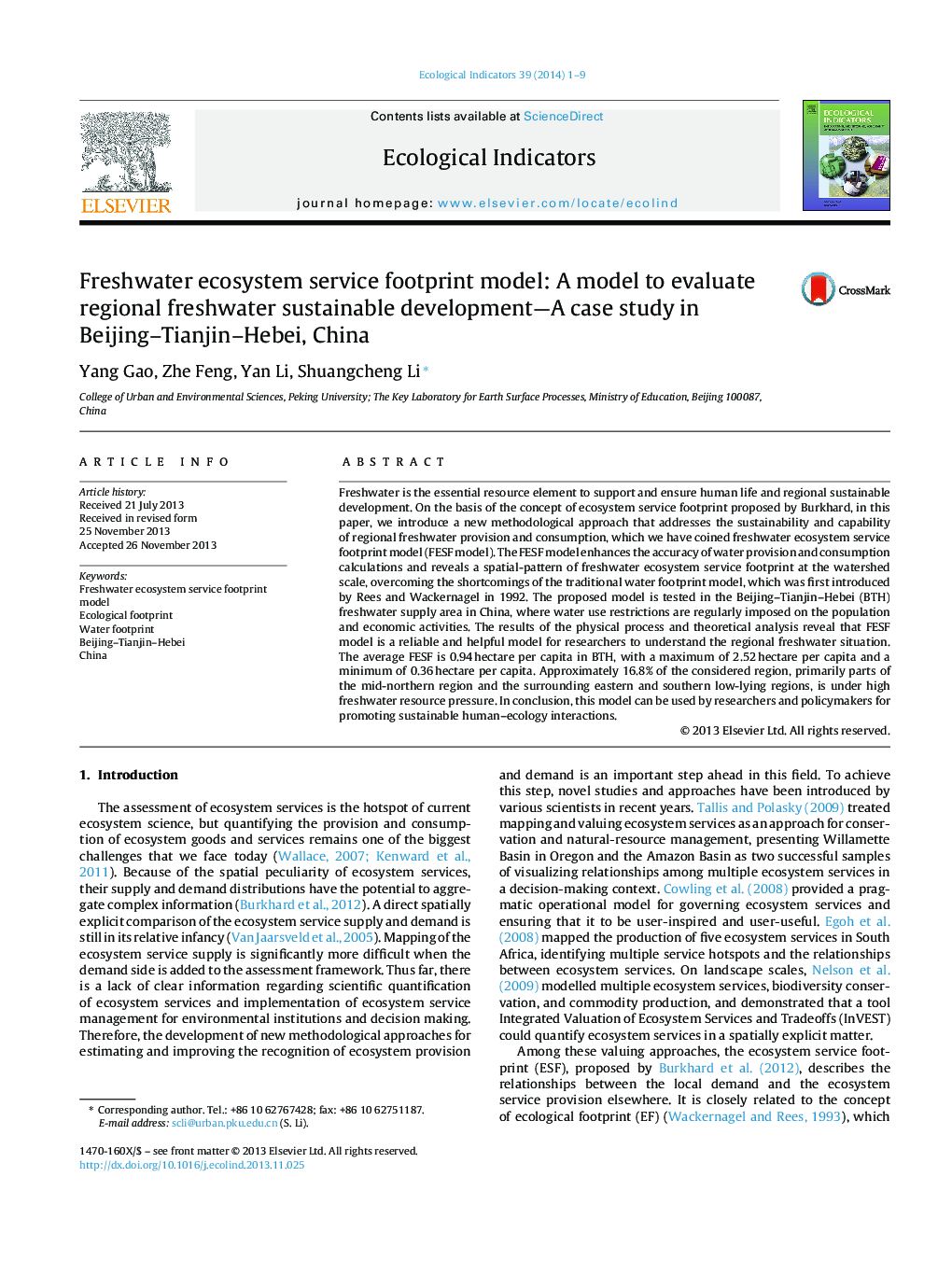| Article ID | Journal | Published Year | Pages | File Type |
|---|---|---|---|---|
| 6295394 | Ecological Indicators | 2014 | 9 Pages |
Abstract
Freshwater is the essential resource element to support and ensure human life and regional sustainable development. On the basis of the concept of ecosystem service footprint proposed by Burkhard, in this paper, we introduce a new methodological approach that addresses the sustainability and capability of regional freshwater provision and consumption, which we have coined freshwater ecosystem service footprint model (FESF model). The FESF model enhances the accuracy of water provision and consumption calculations and reveals a spatial-pattern of freshwater ecosystem service footprint at the watershed scale, overcoming the shortcomings of the traditional water footprint model, which was first introduced by Rees and Wackernagel in 1992. The proposed model is tested in the Beijing-Tianjin-Hebei (BTH) freshwater supply area in China, where water use restrictions are regularly imposed on the population and economic activities. The results of the physical process and theoretical analysis reveal that FESF model is a reliable and helpful model for researchers to understand the regional freshwater situation. The average FESF is 0.94Â hectare per capita in BTH, with a maximum of 2.52Â hectare per capita and a minimum of 0.36Â hectare per capita. Approximately 16.8% of the considered region, primarily parts of the mid-northern region and the surrounding eastern and southern low-lying regions, is under high freshwater resource pressure. In conclusion, this model can be used by researchers and policymakers for promoting sustainable human-ecology interactions.
Related Topics
Life Sciences
Agricultural and Biological Sciences
Ecology, Evolution, Behavior and Systematics
Authors
Yang Gao, Zhe Feng, Yan Li, Shuangcheng Li,
